- VMware
- VMware vCenter Server (VCSA), VMware vSphere
- 25 September 2024 at 18:26 UTC
-

When using a single VMware ESXi hypervisor, you will primarily use local storage.
However, in the case of a VMware vSphere 6.7 infrastructure with multiple VMware ESXi 6.7 hosts, you will use shared storage (accessible via the network).
- Benefits of shared storage in a VMware vSphere infrastructure
- Using shared storage in the case of a VMware cluster
- How to use shared storage on VMware vSphere?
1. Benefits of shared storage in a VMware vSphere infrastructure
Using shared storage allows multiple VMware ESXi hosts to access the same datastores over a high-speed storage network.
But this also allows you to better protect your data and benefit from high availability, because it will be stored on a storage bay which is optimized for this use.
With storage arrays, you can protect your data through:
- a hardware RAID which allows you to tolerate the loss of one or more hard drives depending on the RAID level without losing data.
Hardware RAID also increases the performance of the storage used.
Note that VMware ESXi does not support software RAID, unlike Windows for example. - a snapshot system available on storage bays.
Using shared storage using a storage array also allows you to perform various operations on your virtual machines without using the resources of your VMware ESXi hosts.
Particularly when replicating or copying data from bay to bay or when backing up virtual machines via backup software which will connect directly to the storage bay and not to the host concerned.
Additionally, in the event that a VMware ESXi host goes down, you can simply save them to another host that has access to your shared storage to restart them on that other host.
2. Using shared storage in the case of a VMware cluster
Using shared storage is also a prerequisite for creating a VMware ESXi host cluster.
Which means that when you migrate virtual machines via vMotion from one VMware ESXi host to another, only the RAM and CPU execution will be migrated from one host to another.
The virtual machine files will not be migrated since they are accessible over the network by both the source and destination hosts and will therefore remain in the same location.
3. How to use shared storage on VMware vSphere?
To use shared storage under VMware vSphere, you can use VMware vSAN or the common network storage technologies listed below.
3.1. Fiber Channel (FC)
Fiber Channel (FC) allows virtual machines to be stored remotely over an FC Storage Area Network (SAN).
FC SAN is a high-performance network for connecting your hosts to high-performance storage devices.
However, this requires Fiber Channel (FC) host bus adapters (HBAs).
Note that there is a variant called FCoE (Fibre Channel over Ethernet) which allows you to use Fiber Channel via an Ethernet network.
However, in this case, this requires FCoE adapters.

3.2. Internet SCSI (iSCSI)
The iSCSI protocol allows the use of disks in block mode and is available on storage arrays, but also under Windows Server and Linux.
Which makes it practical in business, but also in the case of a lab since you can easily install an iSCSI server under Windows Server or Linux to carry out your tests.
The iSCSI protocol allows SCSI commands to be used over the traditional TCP/IP network. Which makes it easy to implement.
To use this iSCSI protocol, you can use:
- hardware iSCSI: requires a physical iSCSI adapter, but this has the advantage of relieving the host of operations related to network management since these will be managed by the physical iSCSI adapter.
- software iSCSI: enabling iSCSI on VMware ESXi will add a software iSCSI controller.
This facilitates access to storage bays via iSCSI since a simple network card will be sufficient to use it.
However, performance will be lower than with a physical iSCSI adapter since it is the host that will manage iSCSI-related operations.
In the diagram below you can see the difference between hardware iSCSI (left) and software iSCSI (right).

Once the VMware ESXi host is connected to an iSCSI target, you can use the iSCSI disks it has access to to create VMFS datastores (to store VMs on them, for example) and/or to pass an iSCSI disk to a virtual machine using the "RDM" (Raw Device Mapping) functionality.
To use iSCSI storage under VMware ESXi, refer to our tutorial: VMware ESXi 6.7 - Create an iSCSI datastore.
To configure this from the VMware vSphere Client of VMware vCenter Server (VCSA), refer to our tutorial: VMware vSphere 6.7 - Create an iSCSI datastore.
3.3. Network Attached Storage (NAS)
To use shared storage, you can also use a NAS (Network Attached Storage) thanks to the NFS (Network File System) protocol that it supports.
Note that VMware ESXi supports:
- NFS 3: not secure, but very easy to configure.
Requires the use of a separate network to prevent data from being intercepted by a third party. - NFS 4.1: secure (thanks to Kerberos authentication) and more efficient thanks to multipathing.
Using NFS requires only a standard network adapter.
Once the desired NFS volume is mounted on the VMware ESXi host, you will be able to use your NFS datastore as you would a traditional VMFS datastore.
To create an NFS 3 database on VMware ESXi, refer to our tutorial: VMware ESXi 6.7 - Create a NFS datastore.
To create an NFS 3 or 4.1 datastore from the VMware vSphere Client of VMware vCenter Server (VCSA), refer to our tutorials:
To learn more about VMware vSphere compatibility and features available when using NFS 3 or NFS 4.1, refer to the NFS 4.1 tutorial (cited above).

3.4. Shared SAS (Serial Attached SCSI)
This last possibility allows several hosts connected directly to the SAS to access the same VMFS databank on a LUN.
Source : Networked Storage - VMware Docs.
Share this tutorial
To see also
-
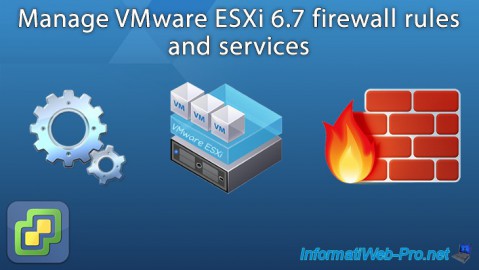
VMware 11/2/2022
VMware ESXi 6.7 - Manage services and firewall
-
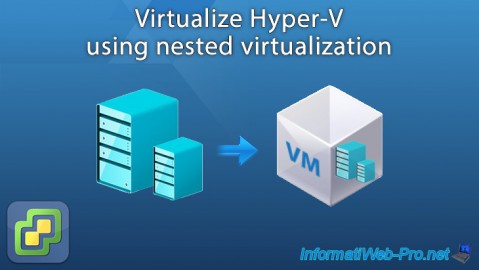
VMware 11/9/2022
VMware ESXi 6.7 - Virtualize Hyper-V (nested virtualization)
-
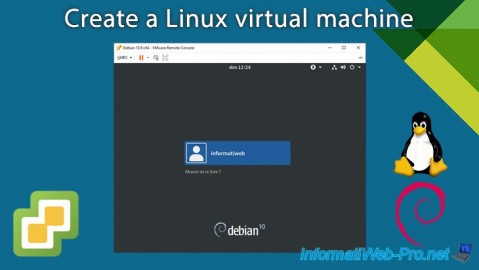
VMware 3/29/2024
VMware vSphere 6.7 - Create a Linux virtual machine
-
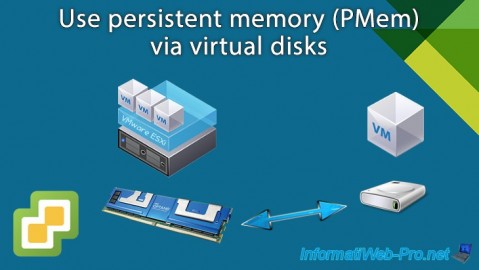
VMware 2/7/2025
VMware vSphere 6.7 - Use persistent memory (PMem) via virtual disks

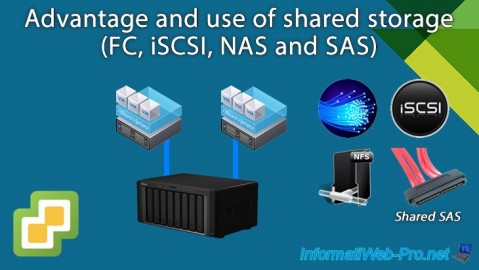
You must be logged in to post a comment